Geometry
Setting about to create my own racing frames, specific to cyclocross and the road, I spent a long time developing my own geometry. The first couple of prototypes in 2012 and 2013 adopted geometries previously familiar to the riders. I knew though that I wanted to go deeper into understanding geometry and develop a range of frame dimensions for Albannach.
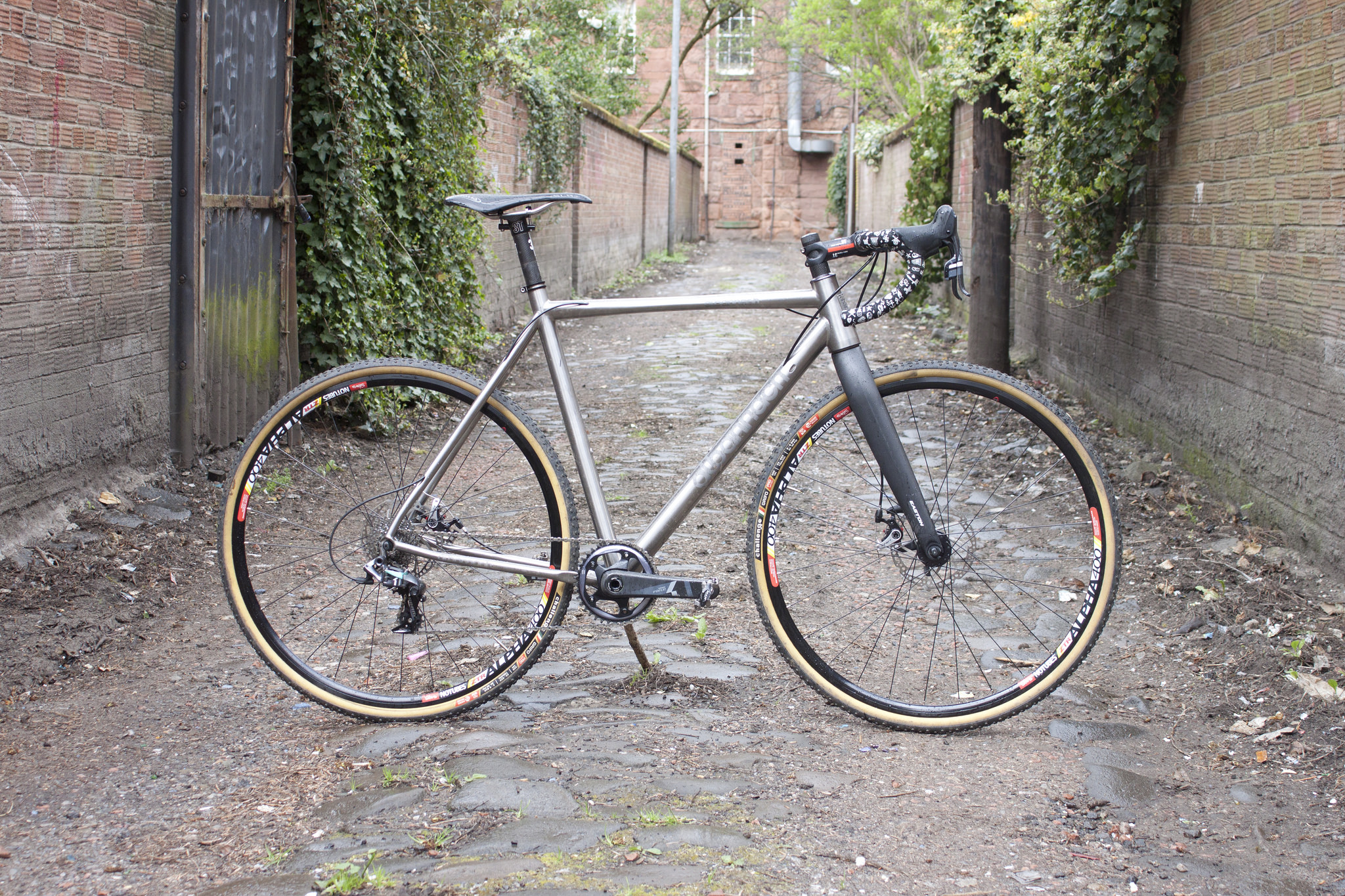
I’m not going to claim ground breaking new geometry that makes these frames harder, better, faster, stronger. I just wanted to be open about how I developed geometries for my Albannach CROIS and RATHAD frames and point out a couple of things I noticed along the way.
In developing my own tables of geometry I first sourced as many head tube and seat tube angles I could for two set top tube lengths, at the upper and lower limit top tube lengths. This gave me a good starting point for what was considered and proven to be ideal frame angles for that frame’s discipline. I then did the same to generate an average chain stay length and bottom bracket drop, again for each frame discipline. Generally the chain stay length and bottom bracket drop does not change with increasing frame size and this uniform characteristic was adopted at Albannach. To these idealistic head and seat tube angles, for the upper and lower limit top tube lengths, I paired traditional triangular seat tube lengths (i.e. a seat tube length equal to the horizontal top tube length). This was to be my starting point to determine reach and stack measurements for each of the frames in that discipline’s range.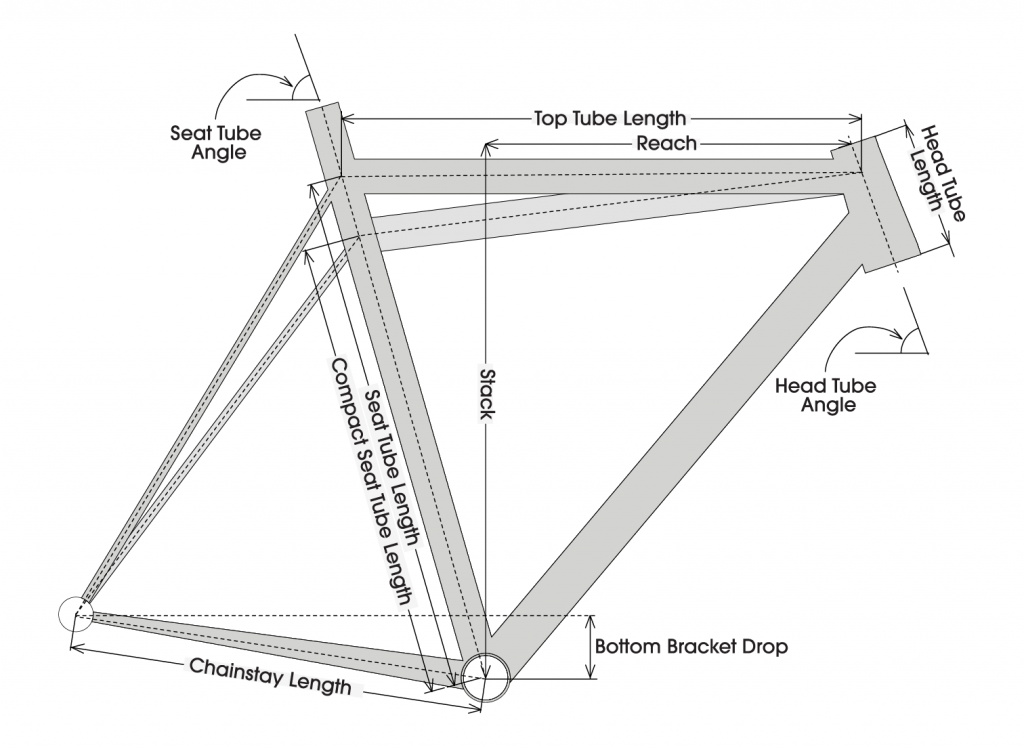 Generally, manufactures define their frames size according seat tube length. It doesn’t take a lot to recognise that seat tube length really doesn’t play a part in fit. For example a large compact frame and a small low profile frame might have the exact same seat tube length, yet they are clearly for different sized riders. That being said this is mostly accepted as the industry way to show a range of frame sizes. When considering top tube length, this is also not so critical. Different top tube lengths can generally be accommodated through seat post and saddle fore/aft adjustments. Reach and stack measurements however are a true representation of the frame size.
Generally, manufactures define their frames size according seat tube length. It doesn’t take a lot to recognise that seat tube length really doesn’t play a part in fit. For example a large compact frame and a small low profile frame might have the exact same seat tube length, yet they are clearly for different sized riders. That being said this is mostly accepted as the industry way to show a range of frame sizes. When considering top tube length, this is also not so critical. Different top tube lengths can generally be accommodated through seat post and saddle fore/aft adjustments. Reach and stack measurements however are a true representation of the frame size.
Reach is the horizontal distance from the centre of the bottom bracket to the centre of the top of the head tube. The stack is the vertical vector of this measurement.
When considering a traditional triangular frame, with increasing seat tube lengths the top tube length would also increase as we progress through a range of frame geometries. You’d think longer top tube lengths, must equal a larger frame, however that doesn’t always stand true. The problem lies in incremental variation of head tube and seat tube angles and how this in turn affects the reach and stack measurements. The plot below shows a number of leading brand’s top of the range models with their stack plotted against reach.
The plot above also highlights the curious results and identifies for an increase in stack (and hence a ‘larger’ frame) sometimes the reach is infact smaller for the ‘larger’ frame. This is clearly a flaw in their design and something I wanted to address for Albannach frames.
This is where the concept of linear reach comes in. It’s quite simple in that the stack is fixed* and to ensure that reach increases linearly with an increase in stack, the top tube lengths are adjusted to suit. This in essence guarantees that incrementally a ’56’ is a larger frame than a ’54’.
[*When I say the stack is fixed I have essentially defined the stack at set values by setting the bottom bracket height as a constant across the frame disciplines range and, for ease of manufacturing, used a set range of head tube lengths]
Another useful indication from the stack vs reach plot is what lies above and below the best fit line. Essentially frames that lie below the best fit line I would deem as more aggressive. The reach may be the same yet the stack is lower and hence lowers the riders front end into a more attacking and possibly aerodynamic position. Above the line would indicate a more relaxed position. From the plot above you can identify that the Cannondale CAADX is more aggressive, the S-Works Crux is more relaxed and the Trek Boone is caparable to the Albannach CROIS.
The plot below is a comparison between the CROIS and RATHAD.
On the above logic I developed a range of frame dimensions for both cyclocross (CROIS) and road (RATHAD). 1 cm increments from a 48cm seat tube length to a 62cm seat tube length were determined but for clarity I’ve chosen to represent only the ‘even’ frames.
As discussed previously on RATHAD post, for me, cyclocross frames should always have traditional geometry. Simply from a racing practicality point of view, you want the front triangle to be as large as possible to make it easier shouldering the bike. I also prefer the aesthetic this way for cyclocross frames. For road frames on the other hand it makes more sense to adopt the compact geometry principle. Smaller frame triangles lend to a stronger build and marginally will reduce weight due to smaller sections of tubing being used. And again a prefer the aesthetic of compact geometry for road frames. However for the traditionalists I’ve developed frame sizes for the RATHAD in traditional and compact form.
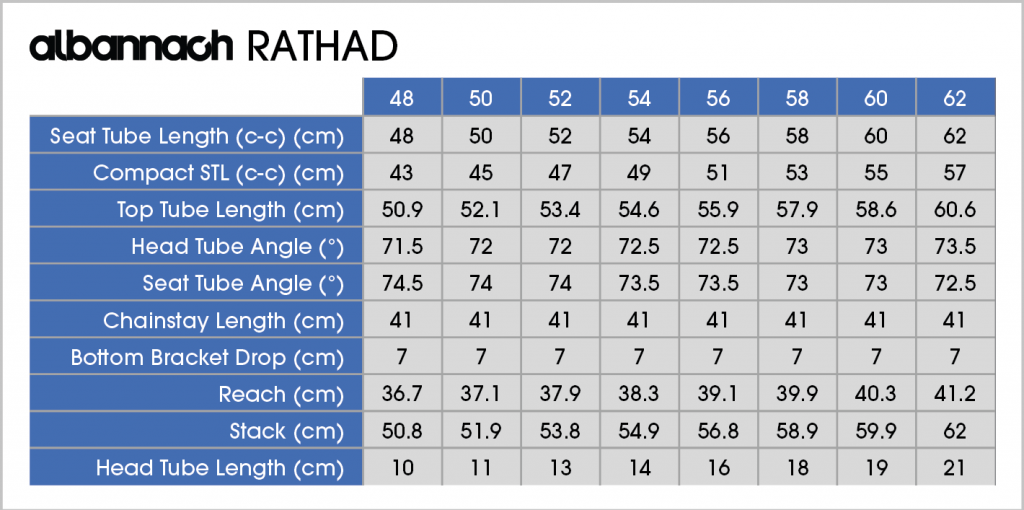 Please feel free to leave abuse below schooling me in the nuances of frame geometry.
Please feel free to leave abuse below schooling me in the nuances of frame geometry.

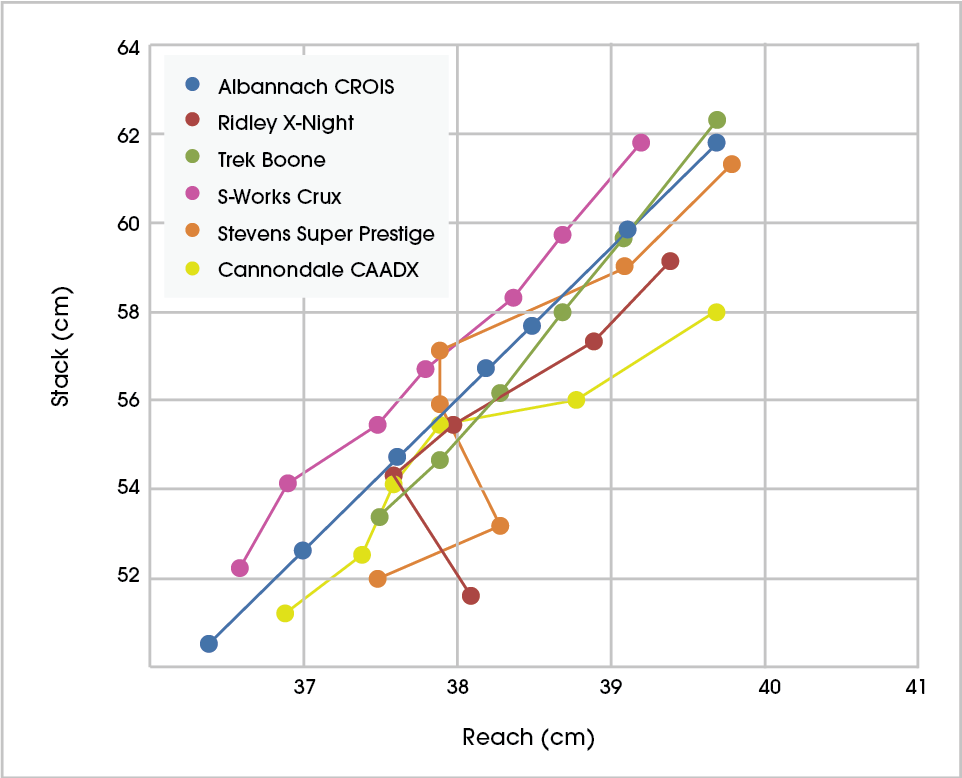
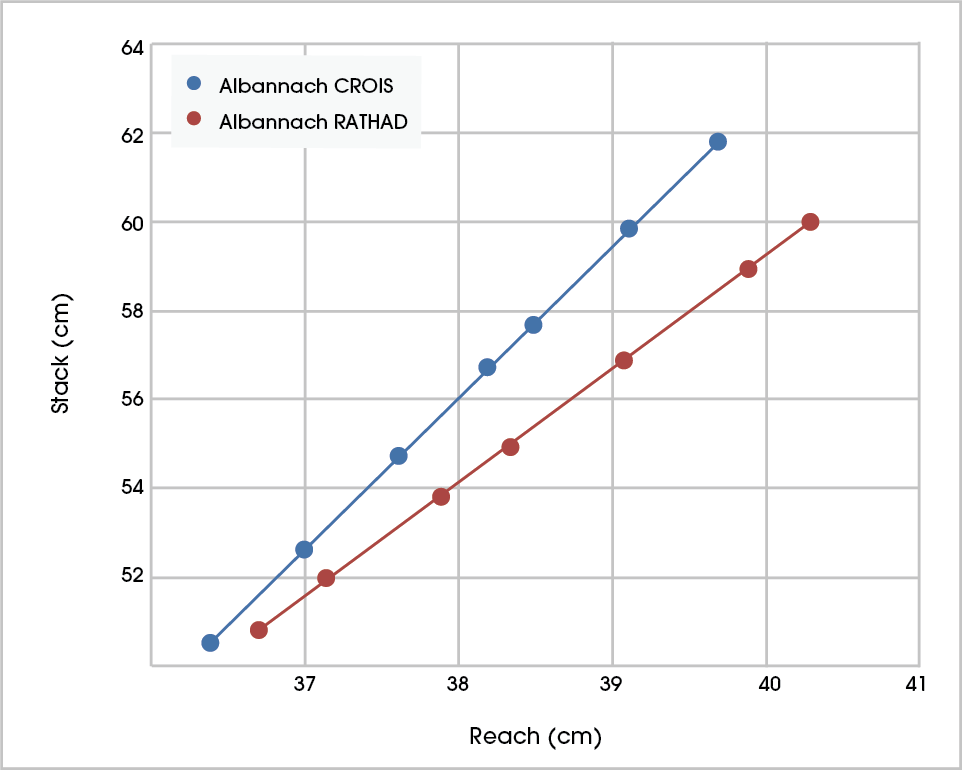
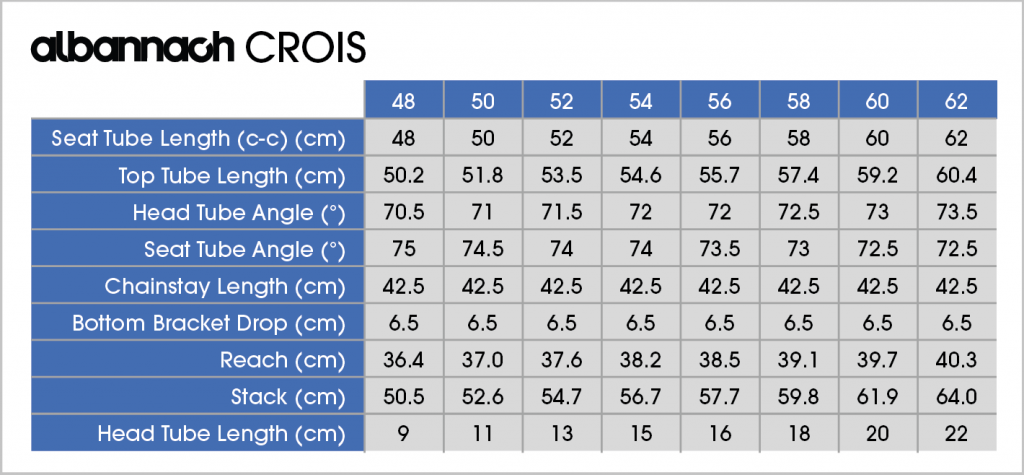
















Comments: